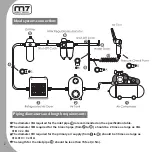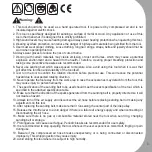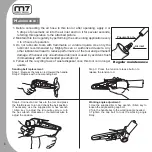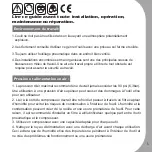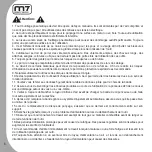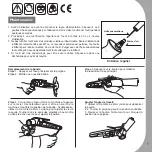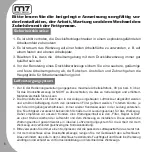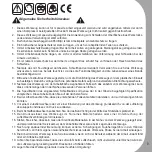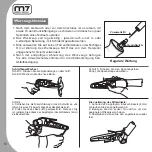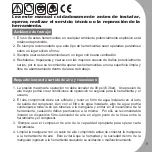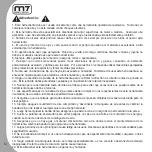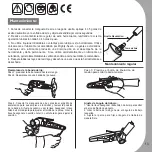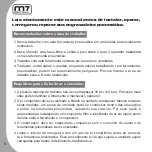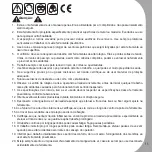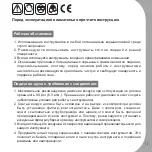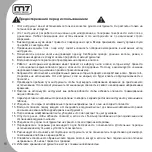
3
1. This tool should only be used as a hand operated tool. It is powered by compressed air and is not
insulated against electric shock.
2. This tool is specifically designed for sanding a surface of metal or wood. Any application or use of this
tool other than what it is designed for is strictly prohibited.
3. High sound levels may cause hearing damage. Always wear hearing protection when operating this tool.
4. Wearing eye/face protection can reduce the danger of high-speed materials being emitted from the tool.
5. User must wear proper clothing. Loose clothing, long hair, stings, straps, belts and jewelry should not be
worn when operating this tool.
6. Always wear gloves to reduce the risk of cuts or burns.
7. Working with certain materials may create emission of dust and fumes, which may cause a potential
explosive environment and a hazard to the health. Therefore, wearing proper breathing protection and
taking some preventive measures are recommended.
8. Never use sanding belt which was exposed to moisture. Also, avoid using this tool when it is wet, that
will affect the function and durability of the tool itself.
9. Test run the tool to confirm the rotation direction before practical use. This will reduce the potential
hazard due to unexpected rotating direction.
10. Never operate the tool away from the work area in case the accessories may detach from the tool, this
may cause injury to personnel nearby.
11. The specification of the sanding belt to be used should meet the exact specification of the tool, which is
specified in the attached specification table.
12. Make sure that the direction of the sparks generated from the sanding belt is properly directed so it will
not create a hazard.
13. Always turn off the air supply and disconnect the air hose before replacing sanding belt or making any
adjustments on this tool.
14. After replacing the sanding belt, make sure that it runs along the center part of the idle pulley.
15. Release the throttle lever to avoid danger if there is a failure of energy supply and when connecting or
disconnecting the air hose.
16. Make sure there is no gas or combustible material stored near the tool when servicing, changing
sanding belt or storage.
17. Prolonged use will cause user fatigue. Periodic breaks are recommended for user safety.
18. It is recommended to stop operating the tool whenever the user experiences discomfort, tingling or pain
during use.
19. Beware if the compressed air hose breaks unexpectedly, or is being connected or disconnected
improperly. This whipping action may cause injury.
20. Avoid storing this tool where it is subject to high humidity.
Warning:
Summary of Contents for QB-311
Page 20: ...20 ...
Page 21: ...21 ...
Page 22: ...22 ...
Page 31: ...31 ...
Page 32: ...32 Air Belt Sander ltem No QB 311 08 07 04 05 02 03 09 06 ...
Page 33: ...33 ltem No QB 311 Spring Pin M2 5x10 ...
Page 34: ...34 Air Belt Sander ltem No QB 312 07 07A 07B 07C 07D ...
Page 36: ...36 Air Belt Sander ltem No QB 313 ...
Page 38: ...38 Air Belt Sander ltem No QB 321 ...
Page 40: ...40 Air Belt Sander ltem No QB 322 ...
Page 44: ...44 ...
Page 45: ...45 ...
Page 46: ...46 ...
Page 47: ...47 ...
Page 48: ...48 ...
Page 49: ...49 ...
Page 50: ...50 ...
Page 51: ...51 ...
Page 52: ...52 ...
Page 53: ...53 ...
Page 54: ...54 ...
Page 55: ...55 ...
Page 56: ...56 ...
Page 57: ...57 ...
Page 58: ...58 ...
Page 59: ...59 ...
Page 60: ...60 ...
Page 61: ...61 ...
Page 62: ...62 ...
Page 63: ...63 ...


